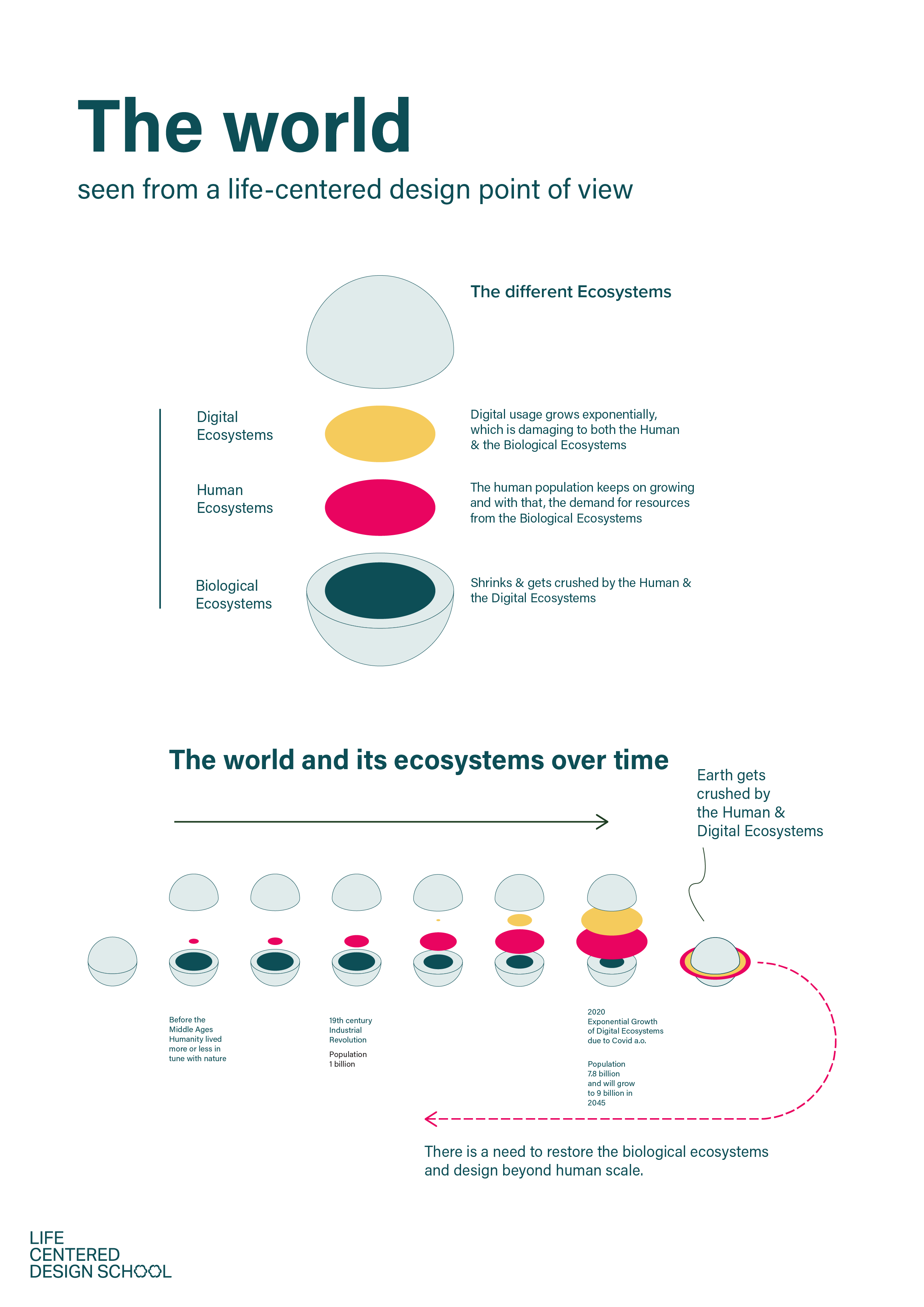Shifting from Human-Centered Design to Life-Centered Design
I was excited about discovering a new design approach when I watched Tim Brown's 2009 TED talk, where he shared his ideas about Human-centered design. Quickly, it became my new path. I worked as a product designer for several years with the constant feeling that I was only designing more waste. Human-Centered Design gave me a more social and sustainable perspective of the world. It made my design journey more meaningful. Twelve years later, human-centered design/ design thinking has yet to bring what I envisioned. With design thinking, we created even more physical and digital garbage. Design thinking and all of its branches got highjacked by the business world to sell more stuff/ screen time to more people, disguised as experiences and services (I also played my part in this).
Creating our trend report a few years back and living close to nature made me realise we must move away from human-centered design and shift towards Life-Centered Design. Today's environmental, racial and human challenges are so complex. Our ecosystems are so unbalanced that we need more than scientific or creative thinking. We need to combine both into a Life-Centered approach.
The focus of design has always been on people. You design something for a human to use: a product, a service, a business or an organisational change. We have learned that this has had a devastating effect on our environment and the planet. We cannot just design for humans anymore; we need to start looking at the side effects of our actions.
We, humans, are part of a bigger picture, an ecosystem. Our actions have a ripple effect. They affect other people, animals, and natural living ecosystems. These ecosystems are called Life, and we need to start designing them not to cause harm but improve Life. We need regenerative solutions for the complete ecosystem, not just for us humans. In any case, we need to be aware of the side effects of our solutions for Ecosystem Life.
This is not easy, but design as a profession and designers, particularly, have the skills to contribute to a design approach with Life at its centre.
The current social and environmental challenges we face today are of such a scale that we need an abductive, systemic & scientific approach to uncover previously unknown problems and design solutions based on known & unknown data.
I find this quote by Patrice Martin Creative Director and Co-Lead, IDEO.org, very relevant, as it also applies to Life-Centered Design:
- "We may not know what that answer is, but we know that we have to give ourselves permission to explore.
Human-Centered Designers always start not only from the place of not knowing the answer to the problem they're looking to solve, they even don't know the problem they are finding solutions for. And though that's not particularly comfortable, it allows us to open up creatively, pursue lots of different ideas, and arrive at unexpected solutions. By embracing that ambiguity, and by trusting that the human-centered design process will guide us toward an innovative answer, we actually give ourselves permission to be fantastically creative, curious about finding solutions for problems we don't know at this moment.
It's not easy not knowing the answer, and even less so not even knowing the right questions to ask. But if we knew the answer when we started, what could we possibly learn? How could we come up with creative solutions? Where would the people we're designing for guide us? Embracing ambiguity actually frees us to pursue an answer that we can't initially imagine, which puts us squarely on the path to routine innovation and lasting impact." –
We should take from Human-Centered Design what is good for our planet and throw away what is not beneficial. To what is left, we add skills and knowledge that help our biological ecosystems regenerate. And thus create the Life-Centered Design approach.
Author: Jeroen Spoelstra
Visuals: Jeroen Spoelstra


